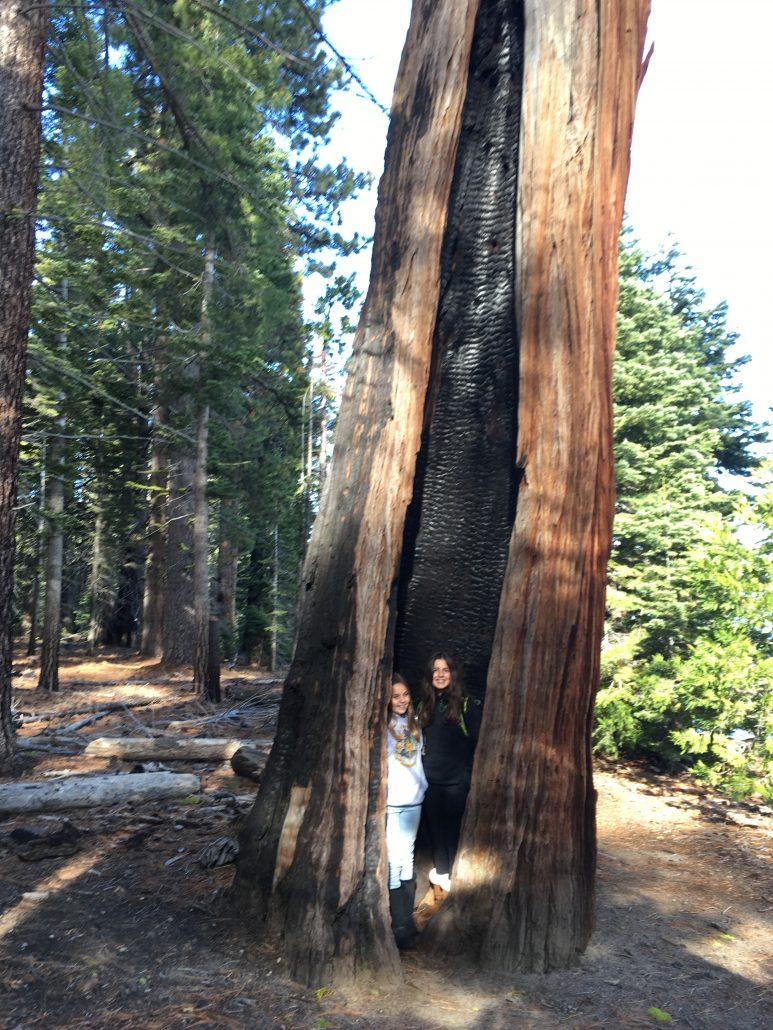
There are lots of amazing things to catch your eye while out on a hike around Tahoe: the majesty of the lake itself of course, the lofty peaks rising high above Tahoe’s shore or the winding course of babbling streams, but it’s also inspiring to take the time to check out our ancient incense cedars.
Incense Cedars can grow up to 190 feet tall and live to be over 500 years old. The needles are a soft lightish green, formed in flat bundles. They have deeply furrowed reddish-orange bark that leads some Tahoe visitors to mistake them for redwoods, which are not native to the area, and to juniper, which grow at a higher altitude then the cedar.
Cedars are quite common below 6500 feet in elevation, but are not found in large stands like the firs and Jeffrey pines. Instead, they are solitary, scattered, each a unique individual. The adult trees with their thick bark are highly resistant to forest fires, often showing the scars of a previous fire in the charred interior, but the tree remains healthy and strong. In some trees, giant arms high up in the tree look like a muscle builder showing off spectacular biceps. Frequently, the trees are invested with mistletoe, which can be detrimental to the tree’s health. And yes, this is the tree that those deliciously smelling cedar chests are made of, as well as those Number Two pencils we spent so much time with in elementary school.
Cedars are most common on the West Shore. With some of the biggest specimens to be found close to the Vikingsholm at Emerald Bay and just up from the shore at Sugar Pine Point State Park. I’m lucky enough to have several lovely ancients in my front yard, in fact I’m contemplating the beauty of the largest one as I write. It’s deep furrows heightening the textures and shadows that remind us of what an amazing gift it is to be able to gaze upon a several hundred year old tree.
